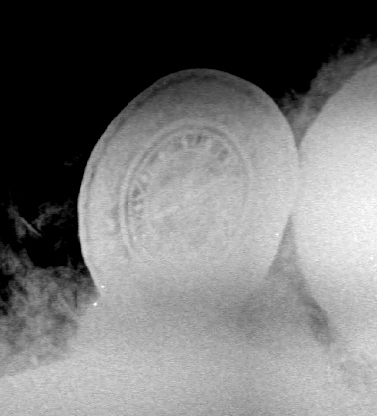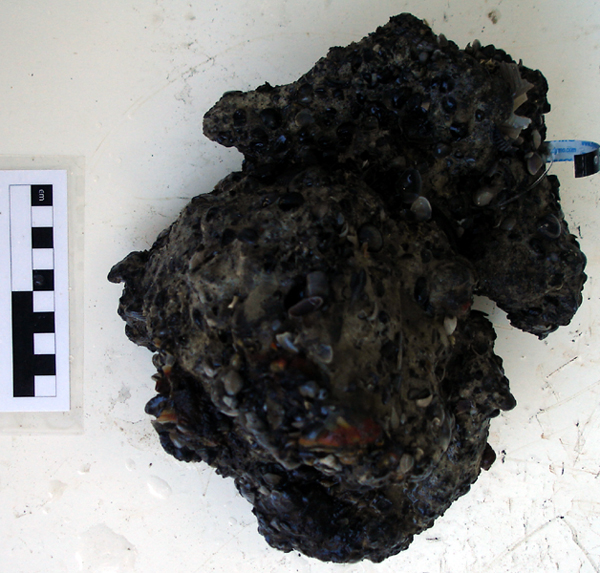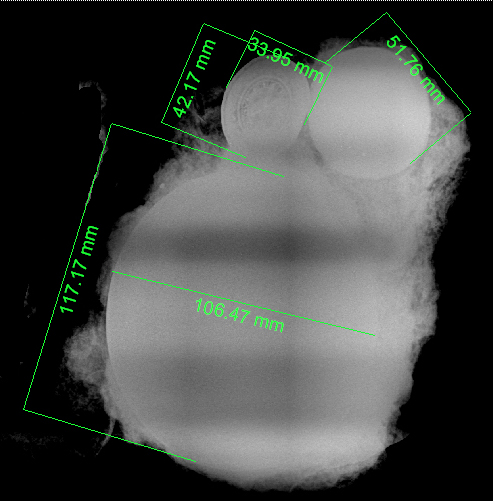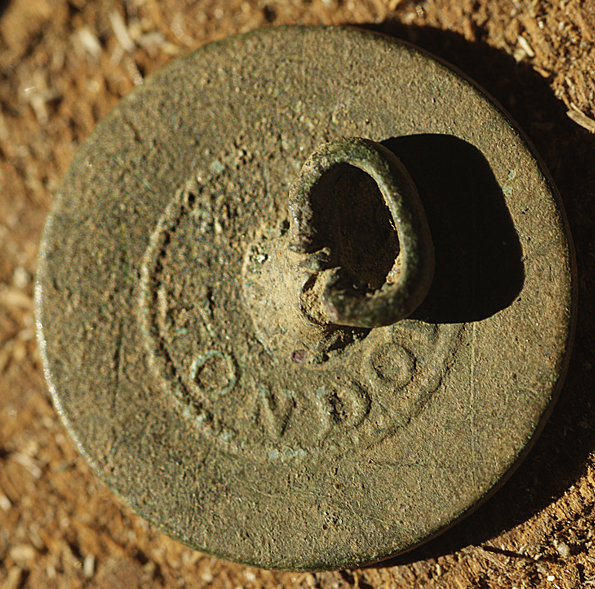
An interesting artifact revealed by x-ray . . .
Tuesday, 25 March 2014, turned out to be a day of discoveries at the Lighthouse. In addition to the find of some old iron plates from the tower’s upper structure buried in the courtyard (which will be featured in a subsequent blog post), we made some pretty cool discoveries at Monahan’s, the local chiropractors’ office. What were maritime archaeologists doing at the chiropractors? Not getting a back-cracking, but borrowing an x-ray machine! Each Tuesday we have scheduled with Monahan’s to come for a visit to use their x-ray to scan a number of concreted artifacts from our 1782 Loyalist shipwreck, the Storm Wreck. What we saw on Tuesday was pretty darn cool. Join us below the fold for the full story . . .
The artifact in question is one of many shapeless blobs of concretion, or iron corrosion by-product, that was recovered during excavations on the shipwreck in the summer of 2013. We have written before about the process of using x-rays to study concreted artifacts, here or hereor here. But its always a cool process, and you never know when an exciting new discovery will be revealed.
Sketch of Unit 18, with the black arrow showing the location of artifact 13S-360 as it was initially encountered and drawn underwater. This unit was originally excavated in 2011 in order to recover a cannon, and then was fully excavated in 2013.
The concretion in question, designated with the Field Specimen number 13S-360, was initially encountered by archaeologists on the seafloor, in Unit 18 on our shipwreck site. We excavate the wreck in a very systematic way, digging only one meter at a time, and measuring how deep in the sand we dig as well. So the entire site is gridded off in one meter square units, which are assigned numbers to make it easier for the divers to keep track of. Unit 18 was first excavated in 2011, when we discovered a buried cannon (actually a carronade, see here and here). After raising the cannon, we did no further digging in Unit 18, until the 2013 field season last summer, when we decided we’d better dig a little deeper there since there could be more artifacts deeper in the sand. Boy were we correct! As you can see from the sketch above, there was a very dense scatter of artifacts including a spoon, several lead objects, and a great number of iron concretions.

Artifact 13S-360, as seen with the naked eye.
Above is a photo of the concretion. Not much to it, really, another shapeless mass of concreted material. But beneath the encrustation are objects unknown . . .

Artifact 13-360, as seen by x-ray, with measurements of key components. Visible are a large and small cannonball, and another, more interesting object . . .
In the x-ray we can see three objects. Taking up most of the space within the concretion is a large cannon ball, measuring between 106.47 and 117.17 mm in diameter. While the digital measuring tool included with the x-ray software is only roughly accurate, these measurements suggest that the cannon ball was 4 inches in diameter, which would have made it ammunition for a 9-pounder gun, just like the carronade we have recovered from the Storm Wreck. If you want to read more about cannon ball sizes, this is a great webpage.
Above the large cannon ball and to its right, is another, smaller cannon ball. This one measures only around 2 inches in diameter, which would weigh around 1 pound only, and probably would have been used in a swivel gun or perhaps as grape shot.

X-ray image of a small, round object, possibly a button, with visible writing.
It is the object to the left of the small cannon ball that is most interesting. Its diameter is hard to measure with the digital measuring tool, since this object is a disk rather than a sphere, and it is positioned at an angle in the x-ray. The measurements suggest it is between 33.95 and 42.17 mm, or between 1.3 and 1.66 inches. What is so interesting about it is that there is what appears to be writing visible in the x-ray image. Despite playing with the settings of the x-ray, we cannot make out what the lettering reads, if indeed these marks are letters.

An 18th century button with lettering on it (indicating its place of manufacture, LONDON). The object in our x-ray image may be a button like this one, which we found on the internet.
Above is a button with lettering on it, indicating that it was manufactured in London. We could possibly have a button like this one, though it does seem to be a little big for a button. An alternative theory is that this might be a sundial or some kind of time piece. We won’t know until we begin to airscribe the object with a pneumatic engraving scribe, and get to analyze it with our own eyes. But in the meanwhile, its a pretty exciting find, even if we don’t know exactly what it is!

